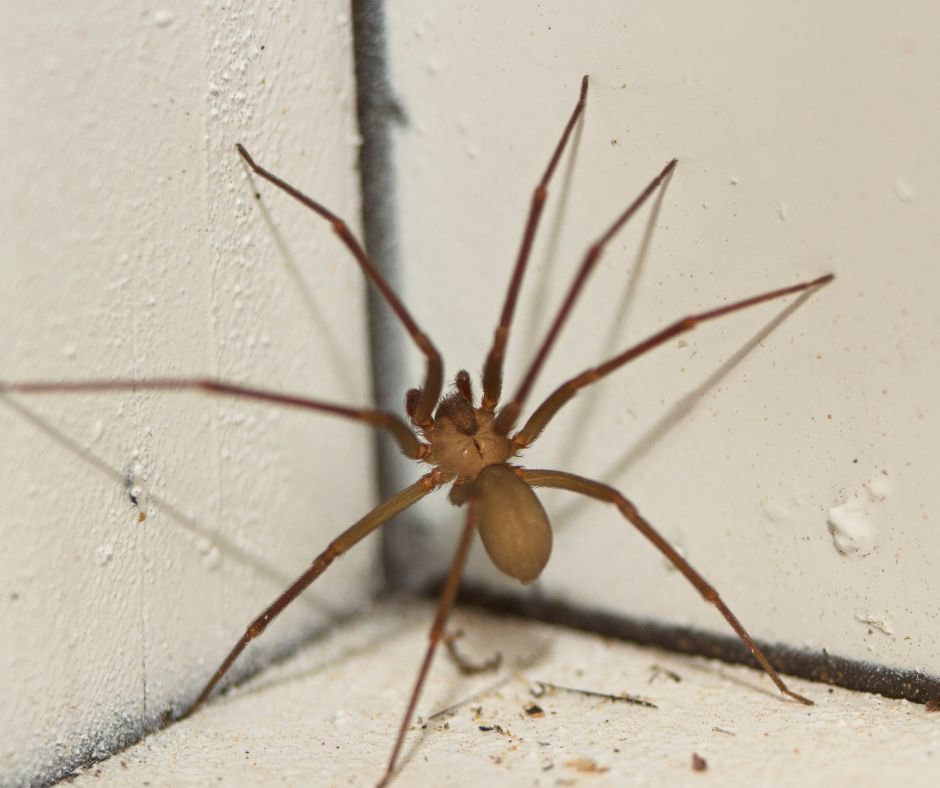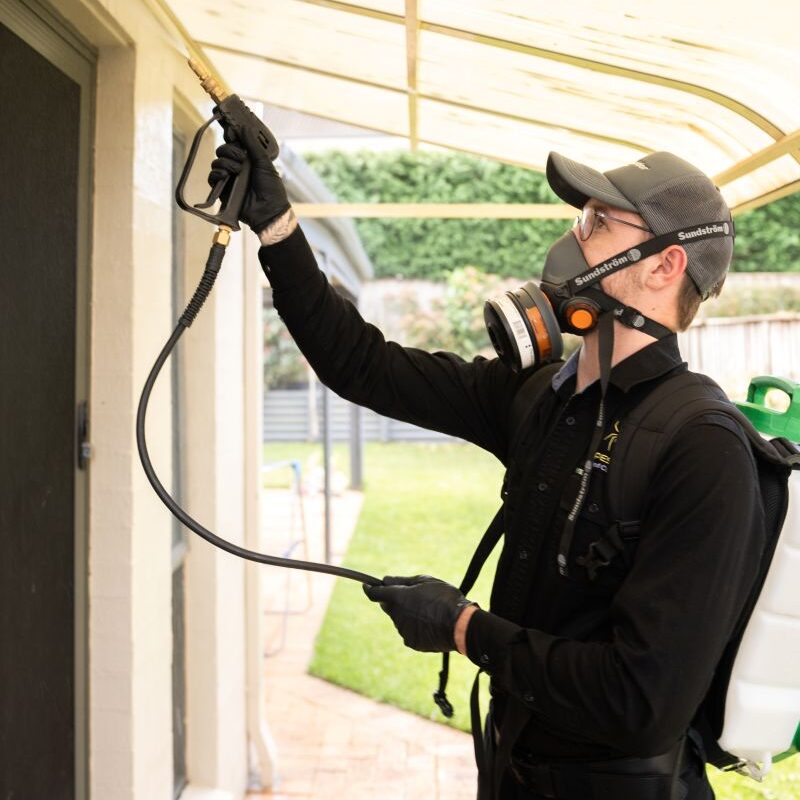When individuals search for a pest control service, they often hope that every stray spider within their home will vanish by the next morning. However, the reality of spider removal is far more complex. Unlike cockroaches or ants, spiders possess distinctive behaviours and characteristics that present a greater challenge in the realm of pest management. This complexity necessitates a more nuanced approach to effectively address their presence.
At So Pest Off, we frequently receive inquiries from homeowners who have undergone a general pest control treatment, only to find that some spiders continue to inhabit their homes. This article aims to explore the unique challenges associated with spider control, set realistic expectations regarding treatment outcomes, and provide actionable strategies for maintaining a spider-free home over time.

Dive into the Intricacies of Spider Control Compared to Other Common Pests
Spiders are among the most misconceived pests that inhabit Sydney homes. While insect sprays and barriers can be incredibly effective against ants, cockroaches, and silverfish, spiders possess unique biological traits and behaviours that complicate their control and elimination. Understanding these differences is crucial for homeowners seeking effective solutions.
1. Uncovering the Unique Anatomy of Spiders
The majority of spiders possess thick, hairy exoskeletons that serve as a form of protective armour, making it extremely difficult for insecticides to penetrate effectively. Unlike cockroaches and ants, spiders do not engage in grooming behaviours, which results in minimal ingestion of pesticides from treated surfaces. This biological characteristic renders them particularly resilient against standard pest control methods, necessitating tailored approaches for effective management.
2. Comprehending Behavioural Patterns That Limit Spider Exposure
Spiders are predatory hunters rather than scavengers, which significantly limits their chances of contacting treated surfaces. They tend to hide in gaps, ceilings, garages, and gardens, spending very little time on the floors or walls that have been treated. Consequently, their limited exposure to pesticides often results in them remaining unaffected once the spray dries, complicating efforts for effective spider control. Recognising these behaviours is essential for implementing effective management strategies.

Recognising Common Spider Species in Sydney and Their Unique Control Challenges
The warm climate and vibrant suburbs of Sydney provide an ideal habitat for a variety of spider species. Below, we outline some of the most commonly encountered types and the specific management challenges each one presents, ensuring homeowners are well-informed:
Huntsman Spiders (including Badge and Tropical Huntsman)
Huntsman spiders are large, fast, and often found on walls and ceilings. Despite their intimidating size, they are generally non-venomous and harmless to humans. However, their quick movements and robust exoskeleton make them challenging to eliminate upon contact with pesticides. Understanding their behaviour is essential for effective control.
Wolf Spiders
These ground-dwelling hunters inhabit lawns and burrows. Active during the night, they demonstrate resistance to surface sprays due to their dense hair and nocturnal habits, necessitating the use of soil-targeted or barrier treatments to achieve effective control within their habitats. Knowledge of their behaviour is crucial for effective management.
Funnel-Web Spiders
Recognised as one of the most dangerous spiders in Australia, funnel-web spiders are burrowing creatures that rarely traverse open, treated surfaces. Their behaviour significantly decreases their exposure to standard sprays, necessitating specialised treatments from licensed professionals to ensure effective management. Understanding their habits is vital for targeted control strategies.
Redback and Black House Spiders
These spiders are frequently found around sheds, garages, and outdoor furniture. They favour sheltered, dry environments, with their untidy webs often serving as the first indicator of their presence. Fortunately, pest control methods are usually effective against these species, allowing homeowners to maintain a comfortable environment without undue concern.
Orb-Weaving and Branded Orb Spiders
As harmless garden inhabitants, orb-weaving spiders create large, symmetrical webs in open spaces. While they play a beneficial role in controlling insect populations, their presence can be unwelcome near doorways, decks, or play areas, prompting homeowners to seek effective management strategies to mitigate their impact.
Brown Trapdoor and Eastern Mouse Spiders (including Red-Headed Mouse Spider)
These burrowing species construct camouflaged tunnels in gardens and lawns. They are less affected by sprays and often require soil-targeted or barrier treatments for effective management, presenting challenges for traditional pest control approaches. Understanding their habits is essential for effective interventions.
White-Tailed Spiders
Commonly found indoors, especially in clothing, bedding, and bathrooms, white-tailed spiders can deliver painful bites; however, they do not cause necrosis. These active hunters continuously move around, making them difficult to manage, as sprays only affect them immediately after application. Awareness of their behaviour is key for effective control.
Understanding the Mechanisms of Insect Sprays and Their Overall Effectiveness
The majority of insecticides used in Australian pest control are classified as residual sprays, meaning they retain activity on surfaces for weeks after application, thereby enhancing their effectiveness. This prolonged action is crucial for managing various pest populations effectively.
Their effectiveness is observed in three distinct stages:
- Contact: The pest traverses a treated surface, which initiates the exposure to the chemical.
- Transfer or Ingestion: The pest grooms itself, inadvertently consuming the chemical, furthering exposure.
- Absorption: The pesticide penetrates the exoskeleton, impacting the nervous system and leading to pest demise.
This process proves highly effective for pests such as cockroaches, ants, silverfish, and fleas. However, it is less effective for spiders, who do not exhibit grooming behaviours or spend significant time on treated areas, thereby posing challenges for effective spider management.
Nonetheless, spider treatments offer several advantages, including:
- Creating barrier protection: any spider crossing treated areas risks exposure to the pesticide, which discourages their presence.
- Reducing their food supply: fewer insects lead to fewer spiders in your home, creating a less inviting environment for them.
- Acting as a deterrent: most spiders tend to avoid areas with a chemical smell or feel, contributing to an overall less hospitable environment.
Clarifying Common Misconceptions Surrounding Spider Pest Control
We have encountered numerous misconceptions regarding spider control, so let's clarify the facts:
- “If I see a spider after a spray, it didn’t work.” This is misleading. Spiders are less affected by dry residues. The treatment is effectively working by eliminating their food sources and gradually reducing their population over time.
- “The spray should kill everything instantly.” Modern pest control chemicals are designed to be safe for families and pets, resulting in slower action for effective management strategies.
- “If I still see one or two spiders, the job failed.” Encountering occasional spiders is normal. The primary goal is to prevent infestations rather than eliminate every single spider.
- “All spiders should die after a general pest control.” Ground-dwelling spiders, like Wolf or Funnel-web, reside in soil or burrows and require specialised treatments for effective management.
- “If I don’t see dead spiders, nothing happened.” Many die in concealed locations or outside the premises. Success is best measured by fewer sightings over time, rather than visible corpses.
- “Pest control means my home will be spider-free forever.” No pest control method can permanently prevent spiders from entering. The focus is on risk reduction and ongoing maintenance, rather than expecting a one-off miracle solution.

Implement Proven Strategies to Prevent Spider Infestations
Pest control is merely one aspect of the solution; ongoing maintenance and proactive prevention play a critical role in effectively reducing spider populations.
Here’s what our experts recommend for maintaining a spider-free environment:
- Schedule regular treatments every six months to ensure chemical barriers remain effective and continue to protect your home from unwanted intruders.
- Seal entry points by closing gaps around windows, vents, and beneath doors to prevent spiders from gaining access to your living spaces.
- Minimise outdoor lighting, as bright lights attract insects, which in turn attract spiders to your property, creating an inviting environment for them.
- Declutter both indoors and outdoors; spiders prefer quiet, undisturbed corners where they can thrive, making it essential to maintain a tidy environment.
- Regularly sweep away webs to discourage new spiders from settling in and establishing their habitat within your home.
If you observe an uptick in spider activity between treatments, your technician may suggest a targeted spider flush or dusting treatment around exterior eaves and wall junctions to address the issue effectively and ensure ongoing control.
Establishing Realistic Expectations for Spider Control Outcomes
Managing spider populations is a matter of control rather than instant elimination. Once pesticide residues dry, spiders are significantly less affected than crawling insects. However, through regular treatments and diligent property maintenance, you can substantially decrease spider numbers and avert future infestations. Emphasising ongoing management is crucial for long-term success.
At So Pest Off, we employ advanced pest management techniques alongside a comprehensive understanding of Sydney’s spider species to tailor our approach to your unique needs, ensuring effective results.
Engage Professional Spider Control Services for Your Home in Sydney
If spiders are causing distress in your home or workplace, do not hesitate to take action. So Pest Off provides safe and family-friendly spider pest control services throughout Sydney’s Hills District, North Shore, and Western Suburbs, ensuring comprehensive management tailored to your needs.
We will conduct a thorough inspection of your property, identify the specific spider species present, and apply the most effective treatment, ensuring your home remains safeguarded long after our visit. Our expertise is your best ally in maintaining a spider-free environment.
Contact So Pest Off today to schedule a comprehensive spider inspection and regain your peace of mind, knowing that effective control is just a call away.
The Article: Spider Pest Control: Understanding the Challenges of Elimination first appeared on https://writebuff.com
The Article Spider Pest Control Challenges: Effective Elimination Strategies Was Found On https://limitsofstrategy.com

